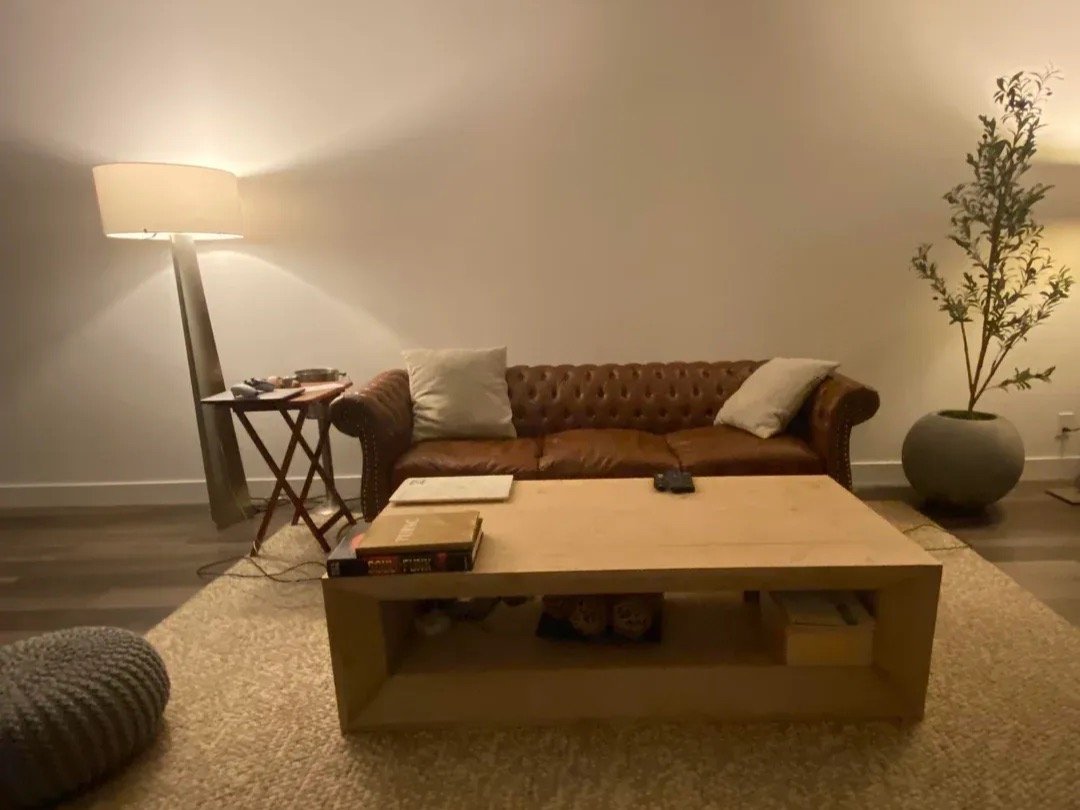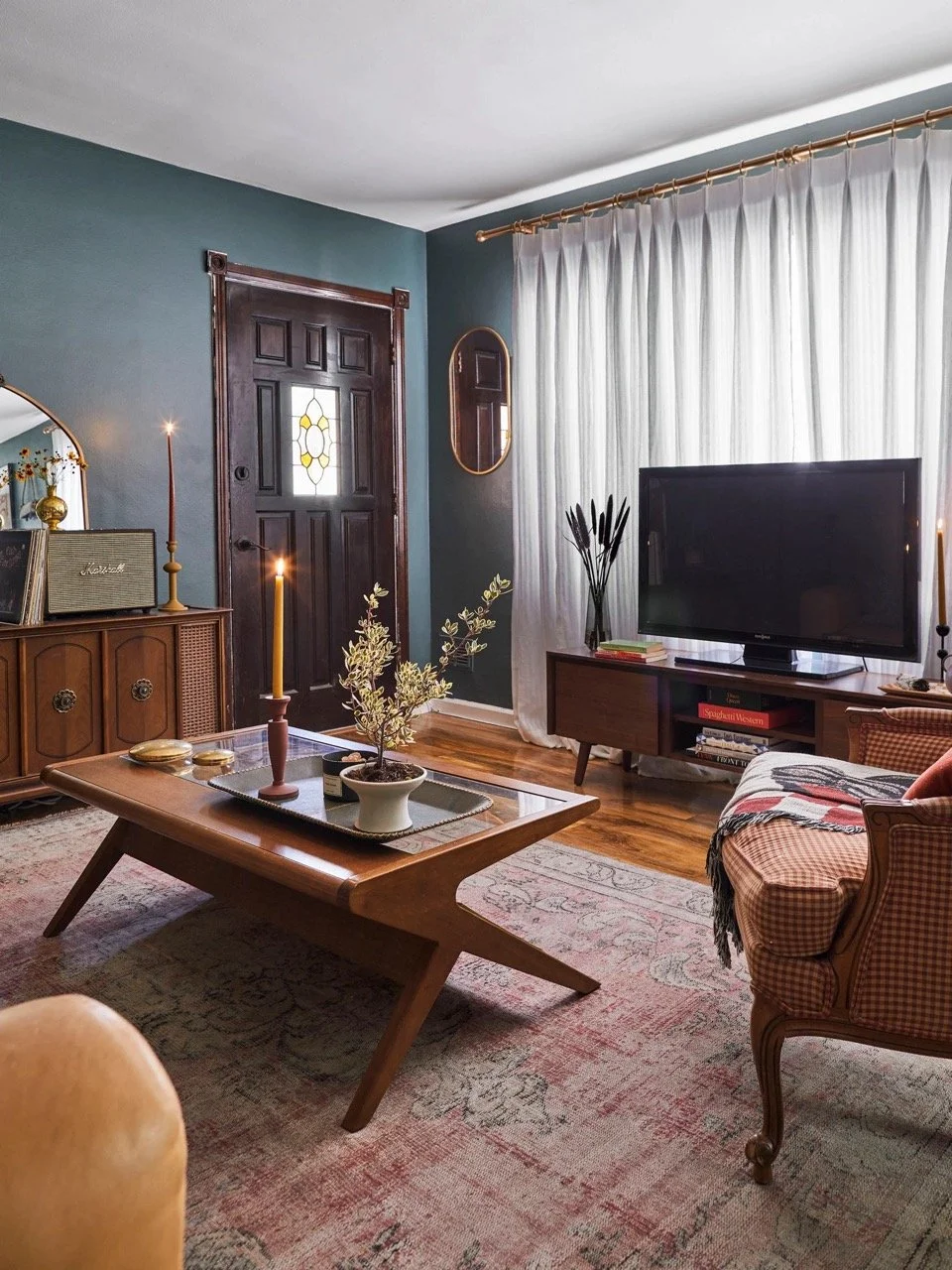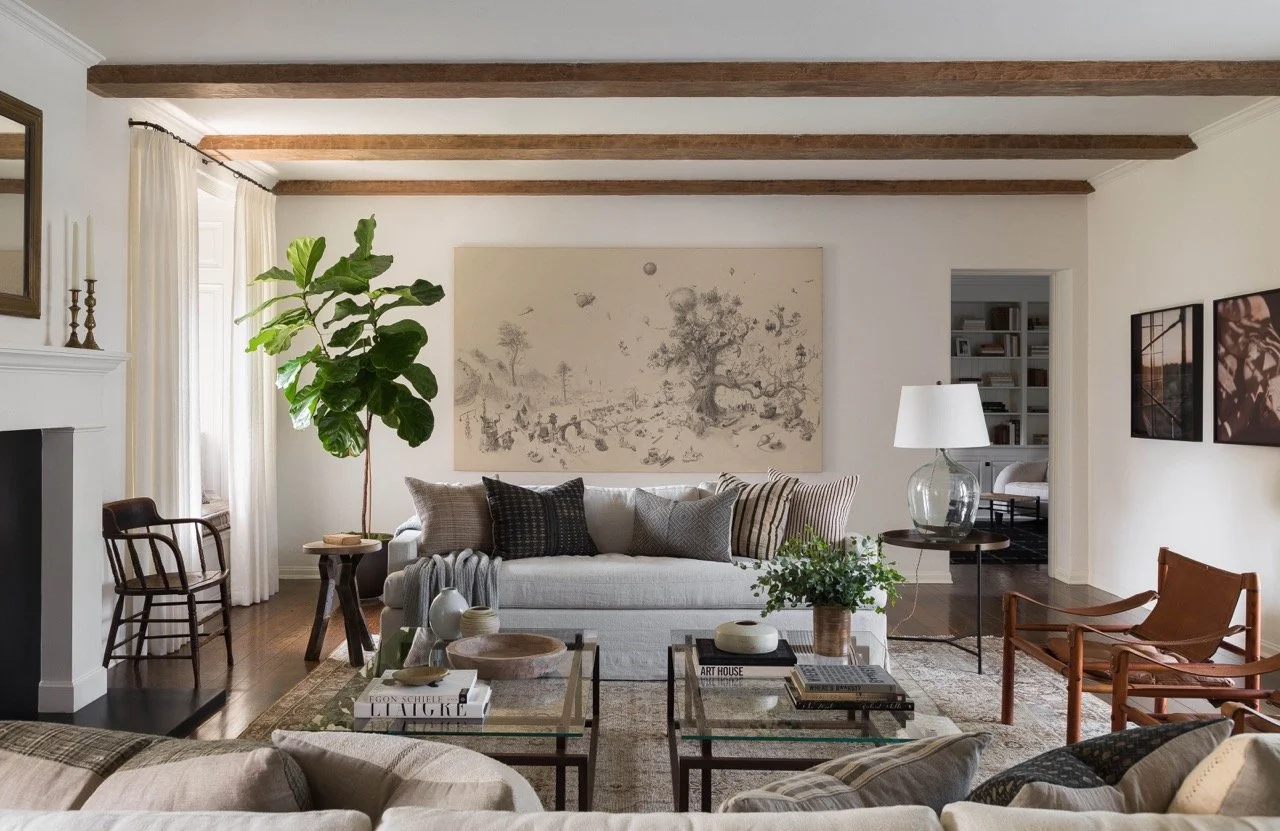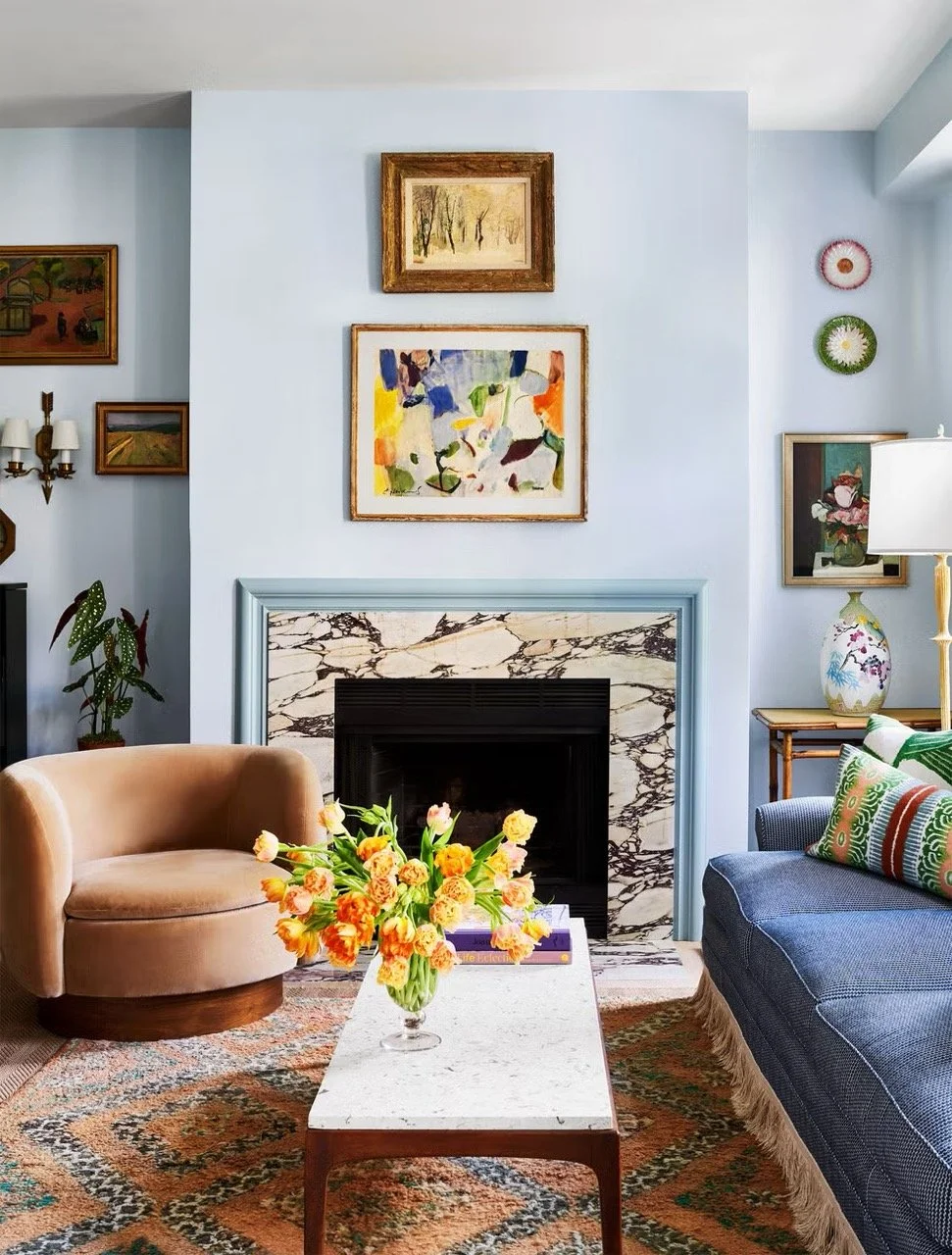The furniture sizing mistake (almost) everyone makes
There’s something wrong with these two spaces.
Can you spot the problems?
Living Room 1 & 2
I’ll give you the answers at the end, but here’s a hint: both rooms are making the same fundamental mistake that’s sabotaging their entire look.
It’s not the colour scheme. Not the lighting. Not even the furniture choices.
It’s scale and proportion.
Scale & Proportion: The Secret To A Balanced Room
These two concepts get tossed around like they’re the same thing, but they’re not. And understanding the difference will change how you see every room.
Scale is about size. How big or small an object is relative to the space it’s in.
Proportion is about the relationships of how objects relate to each other in size.
So instead of asking “Is this piece too big?”
Ask: “Too big for the room? (scale) Or too big compared to what’s around it? (proportion)”
4 Must-Know Scale & Proportion Rules
Rule 1: The Base Should Be Bigger
In furniture relationships, size hierarchy matters. The item on the bottom should anchor the one on top.
Never do this:
A massive TV sitting above a tiny console.
The rug is smaller than your sofa.
Your brain wants a pyramid. Wide base, narrower top.
It’s visual physics. When you ignore it, everything feels off.
Credit: Chelsea Fagan (left) & Sara Ligorria-Tramp (right)
Rule 2: Use the 2/3 Rule (and Know When to Break It)
Here’s your cheat code: The object above should be roughly two-thirds the width of the object below.
For example:
Art above a sofa? Make it 2/3 the width of the sofa.
Mirror above a console? 2/3 the width of the console.
Coffee table in front of your couch? 2/3 length max.
This rule isn’t set in stone. You can bend it a bit. Half is fine. Four-fifths works.
But stray too far and you’ll hit the awkward zone.
Katie Hodges
Rule 3: Cluster Small Things for Visual Weight
If you have small objects you love, but they look lost, don’t fret.
You can make them appear like a bigger object by clustering, grouping, or stacking them.
One small candle = awkward.
A candle, plus a small plant, plus a book? Now you’ve got presence.
Small things gain power when they work together.
Credit: Jessica Summer (left) & Kelly Marshall (right)
Rule 4: Balance Visual Weight Across the Room
Even perfectly proportioned pieces can make a room feel off if all the heavy stuff is crammed on one side.
Your room will feel like it’s about to tip over.
Your eye instinctively looks for balance.
So spread out your larger pieces
Your One Minute Fix
Right now, scan your room.
Find one piece that’s too small, floating alone, or completely out of sync with what’s near it.
Fix that one thing.
Either pair it with something else, move it, or size up/down.
Master these four rules and you’ll never look at furniture the same way again.
Answers from the top:
Living Room 1: The coffee table is way too big for that sofa.
Living Room 2: The console and mirror are way too small for that wall. The awkward sheepskin rug doesn’t help the cause.
👇 Still feel like your room is off after fixing scale and proportion? You’re probably making one of these sneaky design mistakes.






